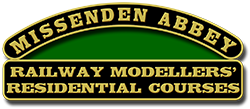This ‘hands-on’ course follows on from our previous Semaphore Signalling course. However, it is not restricted to those that have attended that course and modellers with little or no previous experience of semaphore signal construction are welcome to attend.
Tutor Karl Crowther will help modellers who attended that previous course to tackle more involved projects whilst also helping those wishing to start out on the road to constructing working semaphore signals.
 Nice, ‘ready to plant’, working signals are available from the trade but only cover basic types so for more complex subjects, building from scratch is the only feasible way. To help you start this tutor Karl Crowther will help you build a bracket semaphore signal in 4mm scale.
Nice, ‘ready to plant’, working signals are available from the trade but only cover basic types so for more complex subjects, building from scratch is the only feasible way. To help you start this tutor Karl Crowther will help you build a bracket semaphore signal in 4mm scale.
You will need to provide the basic parts (e.g. posts, arms, finials, lamps, ladders). This can be round or square post type, upper or lower quadrant to suit your own particular preferences. Karl has provided a list of tools, parts, suppliers and references which is given below.
You will be shown how a range of basic techniques can be extended to more complex bracket signal arrangements, together with ways of getting illumination to the signal lamps.
There are several ways to make signals work. There will be a session devoted to these including the use of servos. On hand will be suitable servos for you to experiment with and the electronic modules to drive them. MERG components will be available to purchase over the weekend.
You will need to have some experience with a soldering iron. Although the course is an introduction, some of the work will be quite intricate and fiddly by its very nature. Karl will of course be on hand throughout the process to give help, guidance and encouragement as your signal progresses.
Although the course will be working in 4mm scale the techniques are readily adaptable to other scales. Should you wish to work in a different scale, that will not be a problem, but again you’d need to bring along your own components to work on.
If you have any queries about the course, please use the ‘Contact Us’ page.
